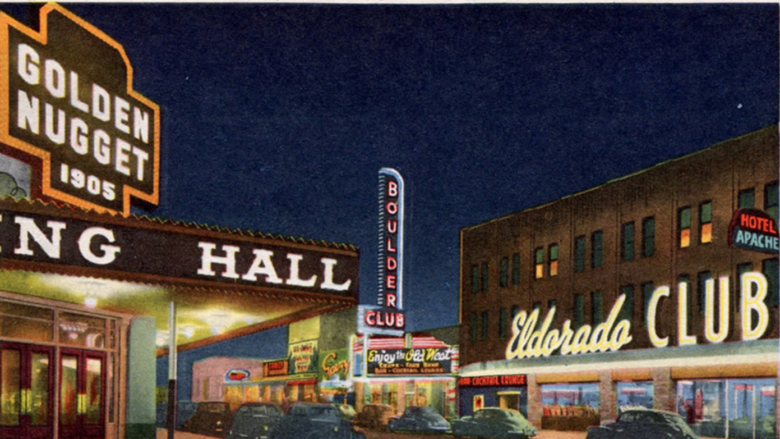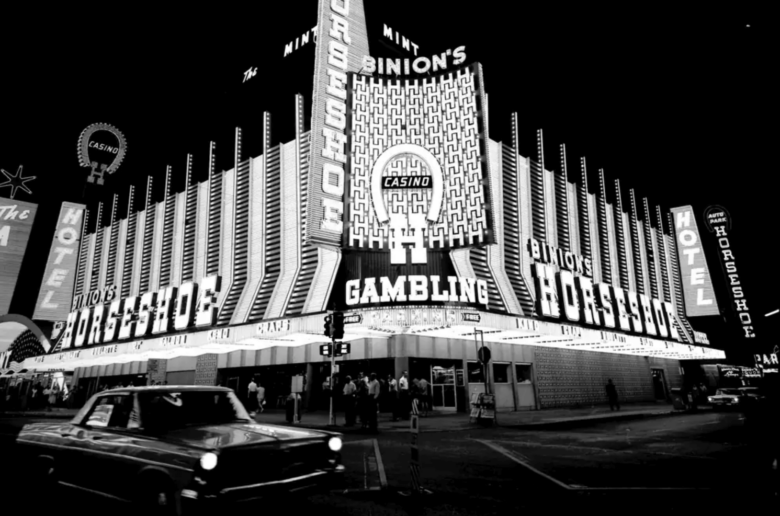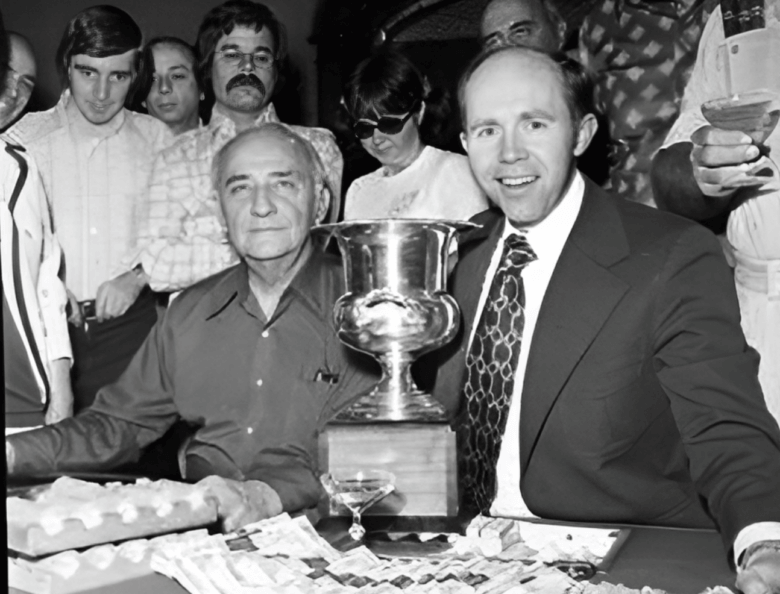WSOP 1970 – Where It All Began
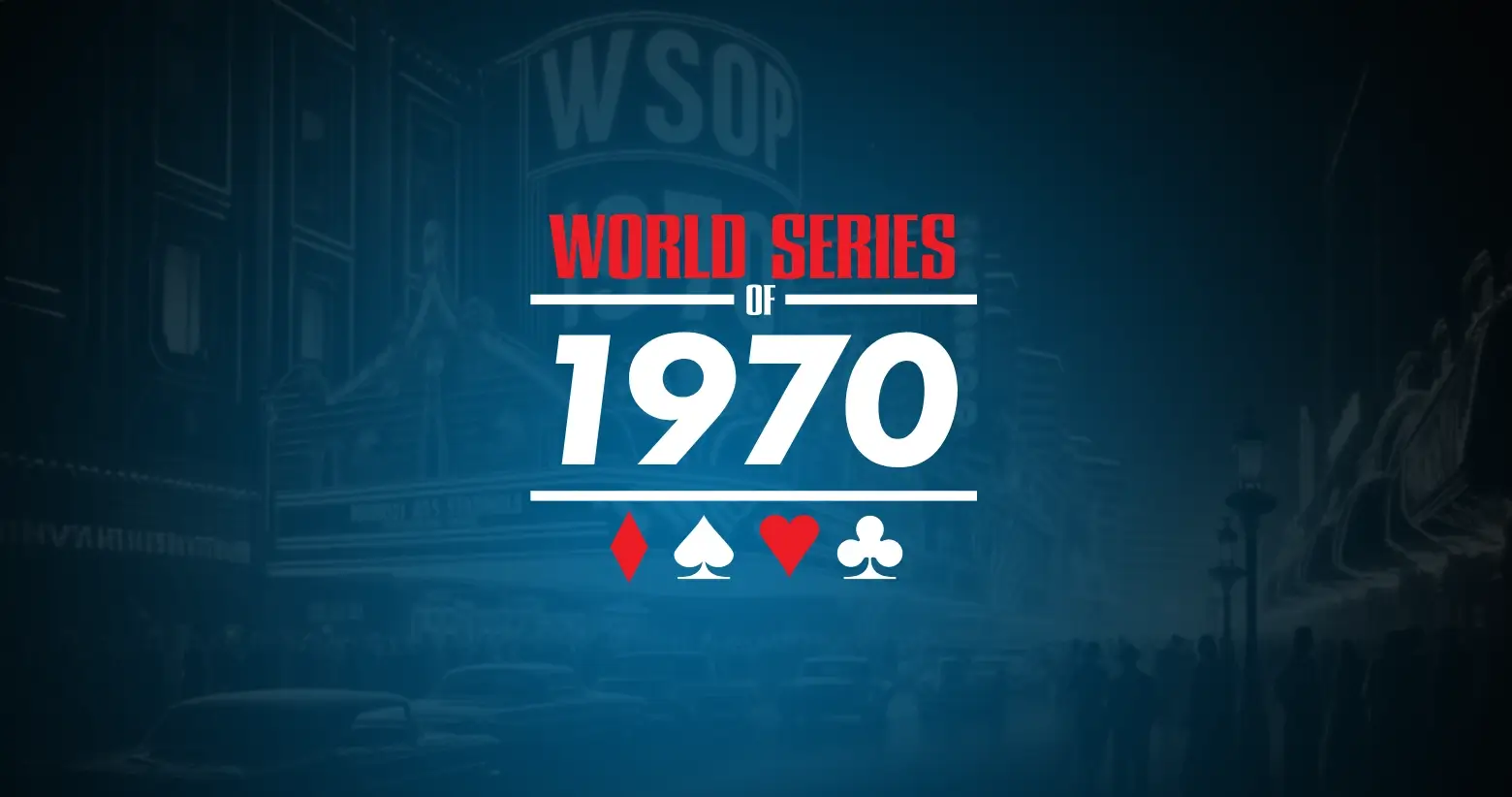

- Fact Checked by: PokerListings
- Last updated on: June 10, 2025 · 6 minutes to read
Table of Contents
It’s the year 1970. Berlin is still divided by the wall, Paul McCartney announces the breakup of The Beatles, the Brazil national team becomes the world champion in soccer, and Las Vegas sees the start of the first-ever World Series of Poker (WSOP).
The 33-year-old president of the Horseshoe Casino, Jack Binion, invites the best poker players to his casino. They are to compete for the title of the world champion for the first time in history.
A Bit of Background
Jack Binion became head of the Horseshoe Casino when he was just 26 years old in 1963. His rapid career growth is linked to the name of his father — Lester ‘Benny’ Binion, who was involved in organizing illegal gambling and moved to Nevada in the 1940s, where he opened the legal Binion’s Horseshoe Casino in 1951.
Not long ago, the casino’s site was home to the Eldorado Club and Hotel Apache, whose best years were far behind. However, Benny Binion quickly transformed the building. Instead of sawdust-covered floors, carpets appeared, the entire interior was renovated and resembled the Wild West with low ceilings and velvet wallpaper.
Benny offered all players, regardless of gaming limits, the same conditions. The hall introduced craps tables with bets of $500, which was ten times higher than the limits in other Las Vegas casinos. Later, the $500 limit was removed. Binion first raised the bet limit to a fantastic $10,000, and then removed it altogether.
The Horseshoe Casino became the venue for the most expensive game in Las Vegas. Big businessmen and the best professionals came to play here. The casino did not organize shows to attract an audience, as other casinos did; here, they played for big money.
Benny involved members of his family in the casino business. His wife, Jane, managed the company’s accounting until her death in 1994. Sons Jack and Ted controlled what happened in the gaming hall.
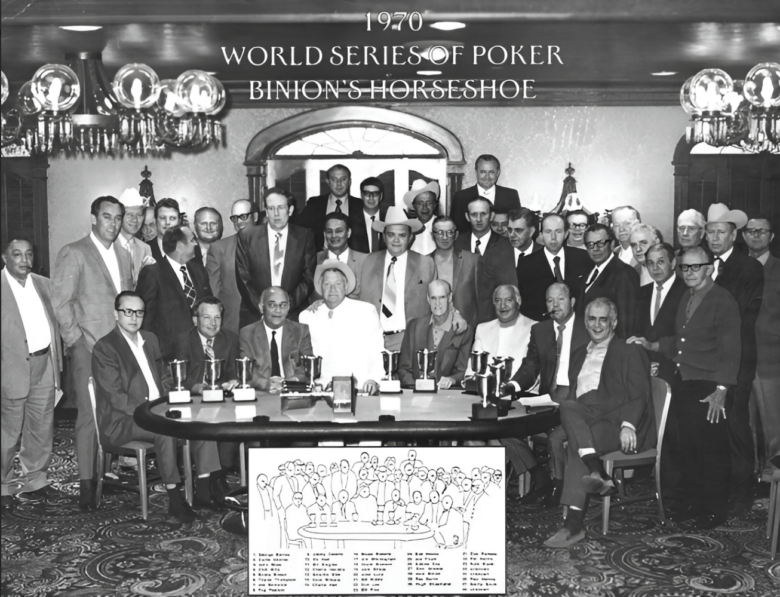
In 1953, Benny found himself in Leavenworth Penitentiary (Kansas), where he spent 4 years due to tax evasion. Binion had to sell a large share of the casino to pay off debts. The buyer was a businessman from New Orleans, Joe W. Brown. While the casino was under Brown’s control, a $1 million installation made of $10,000 bills was set up in the main hall. In 1959, the installation was sold, and in 1964 Benny recreated it so that casino guests could take photos in the hall.
In 1957, Benny regained control over the casino, but a court decision barred him from holding a gambling license. Therefore, control over the business passed to Binion’s sons. Jack became the president of the company, and Ted – the casino manager.
In 1969, Tom Moore, the owner of a hotel in Reno (Nevada), organized a poker game called Texas Gamblers Reunion. Professional players were invited to the game, and Crandell Addington was the winner. Since poker enthusiasts were only playing poker, the casino did not gain additional income, so Tom Moore decided not to hold the game next year. Then, Benny Binion approached Tom with a request to allow a similar series to be held in his casino.
Thus, we come to the moment when Jack Binion in 1970 invited the best poker players to gather at the Horseshoe Casino.
Participants
Jack Binion selected 38 players for the series. This fact is often forgotten now, but Doyle Brunson in his autobiography “The Godfather of Poker” mentions the number of players and even the names of those professionals who were knocked out before the final table. Among them were the future WSOP 1982 champion Jack Straus and the famous gambler Titanic Thompson.
The best players of 1970 were:
- Johnny Moss – a 63-year-old professional who got acquainted with gambling as a teenager. In 1949, Moss played a heads-up match against ‘Nick the Greek,’ which lasted five months. Benny Binion organized this game to draw attention. Moss won between 2 to 4 million dollars and became a legend. More about this game can be learned from the book “The Biggest Game in Town” by Alfred Alvarez.
- ‘Amarillo Slim’ Preston – a 42-year-old professional who traveled to casinos with ‘Sailor’ Roberts and Doyle Brunson. This trio introduced Las Vegas to Texas Hold’em, which became the dominant form of poker. ‘Amarillo Slim’ wrote his autobiography in 2003, in which he shared about playing poker with US Presidents Lyndon Johnson and Richard Nixon. He was the first true poker star.
- Bryan ‘Sailor’ Roberts – a 39-year-old poker and bridge player. He got his nickname Sailor because he served in the United States Navy during the Korean War.
- Doyle Brunson – a 37-year-old player who was destined to become a symbol of poker. In his youth, Brunson was an excellent basketball player and had every chance to join the NBA team – Minneapolis Lakers, but a leg injury ultimately changed his career in sports. Doyle started playing poker even before the injury, but afterwards, he became even more engrossed in the game. After graduating, Doyle got a job at Burroughs Corporation, where he was supposed to work in sales. On his very first day, colleagues invited the newcomer to play poker, and Brunson won an amount equal to his monthly income. At that moment, Doyle decided to quit his job and pursue poker professionally.
- Walter ‘Puggy’ Pearson – a 41-year-old player who in 1949 came up with the idea of holding poker tournaments. Before that, poker was exclusively a cash game. Pearson shared his idea with ‘Nick the Greek’ Dandolos, who in turn passed it on to Benny Binion. Despite his limited education (three years of school), ‘Puggy’ was an excellent player, especially in Limit Hold’em.
- Crandell Addington – a 31-year-old businessman who in 1969 became the best player at the Texas Gamblers Reunion in Reno (Nevada). By that time, Addington had already made millions and played poker for fun. Crandell most frequently played at the final table of the main event of WSOP (7 times from 1972 to 1979) and became a true legend.
- Carl Cannon – a professional player who is considered one of the best in the early ’70s, but he never managed to achieve success in the WSOP series.
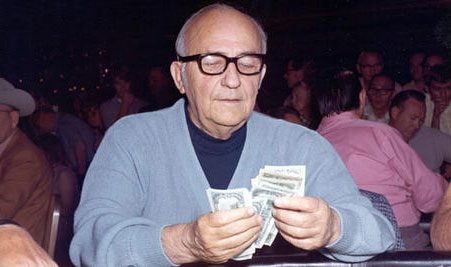
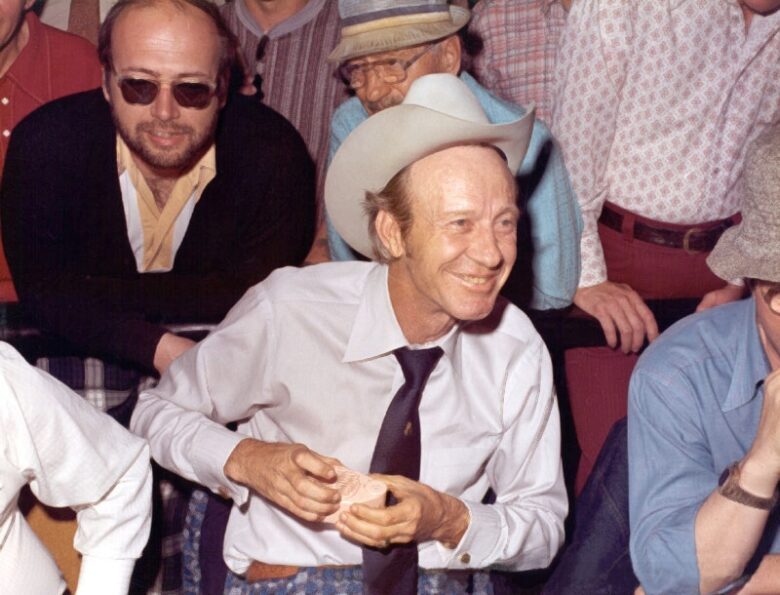
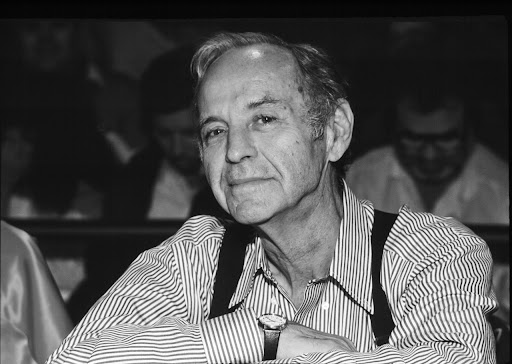
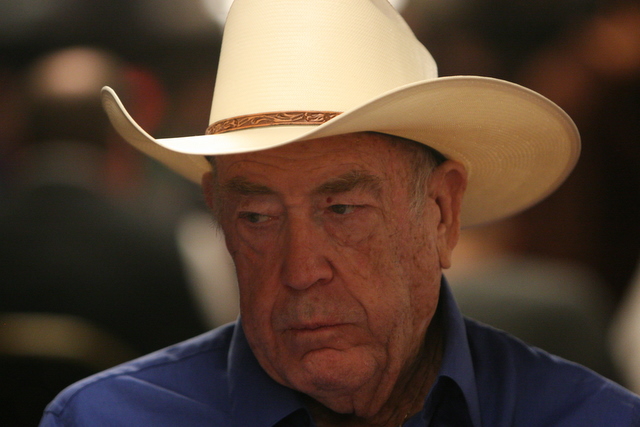
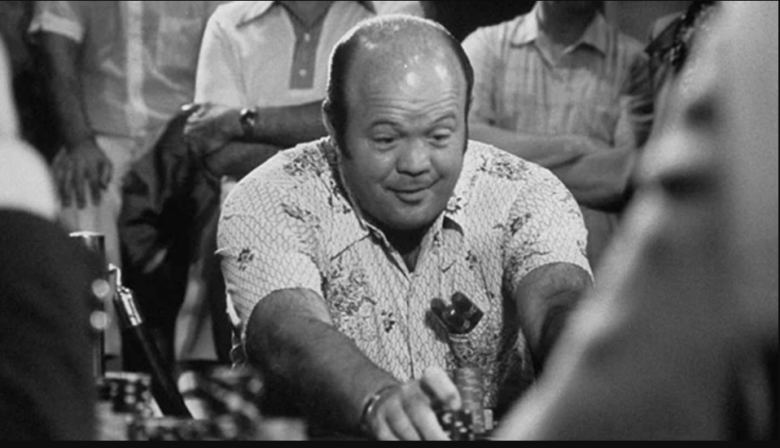

WSOP 1970 Rules
The game was played in five different disciplines. The participants of the final table had to determine the champion by voting. The entire prize pool went to the tournament champion, and this continued until 1978.
Story
According to legend, all participants of the final vote cast their vote for themselves. Therefore, Jack Binion, as the organizer, suggested the participants choose the second-best player, excluding themselves. This vote unanimously determined the winner.
This legend contradicts the memories of the game participants. For example, Doyle Brunson recalled in an interview with Bluff magazine that not everyone voted for themselves due to high ego:
Honestly, I don’t think everyone did. Indeed, there was a lot of ego back then about who was the best player. I’ve heard Jack [Binion] tell the story: They had to count the second-place votes to determine the champion. And that champion was Johnny Moss.
The Winner — Johnny Moss
The winner of the WSOP 1970 was Johnny Moss.
Interesting Facts
- Johnny Moss received a silver cup, not a WSOP bracelet, which only appeared in 1976.
- Jack Straus was voted “Most Congenial Participant.”
- The purpose of organizing the game in 1970 was to attract players to the high-stakes cash game taking place simultaneously in the casino.
- After the game ended, Benny Binion told Doyle Brunson: “You know, Doyle, someday we may have a hundred people in this tournament”
WSOP History
1970, 1971, 1972, 1973, 1974, 1975, 1976, 1977, 1978, 1979, 1980, 1981, 1982, 1983, 1984, 1985, 1986, 1987, 1988, 1989, 1990, 1991, 1992, 1993, 1994, 1995, 1996, 1997, 1998, 1999, 2000, 2001, 2002, 2003, 2004, 2005, 2006, 2007, 2008, 2009, 2010, 2011, 2012, 2013, 2014, 2015, 2016, 2017, 2018, 2019, 2020, 2021, 2022, 2023, 2024
-
Stake.US Poker4.3
- Rakeback 5%
- $55 Stake Cash + 260K Gold Coins
T&Cs Apply | Play Responsibly | GambleAware
18+ | Play Responsibly | T&C Apply
-
Appeak Poker4.1
- 1,000 Chips Daily
- FREE 5,000 Chips
T&Cs Apply | Play Responsibly | GambleAware
T&Cs Apply | Play Responsibly | GambleAware
-
- 2,500 Gold Coins + 0.50 Sweeps Coins
T&Cs Apply | Play Responsibly | GambleAware
18+ | Play Responsibly | T&C Apply
-
WSOP.com4.3
- Up to 70%
- 100% up to $1000
T&Cs Apply | Play Responsibly | GambleAware
T&Cs Apply | Play Responsibly | GambleAware
-
CoinPoker4.1
- 33% Weekly
- 150% up to 2000$
T&Cs Apply | Play Responsibly | GambleAware
+18 / T & C apply / Play responsible

